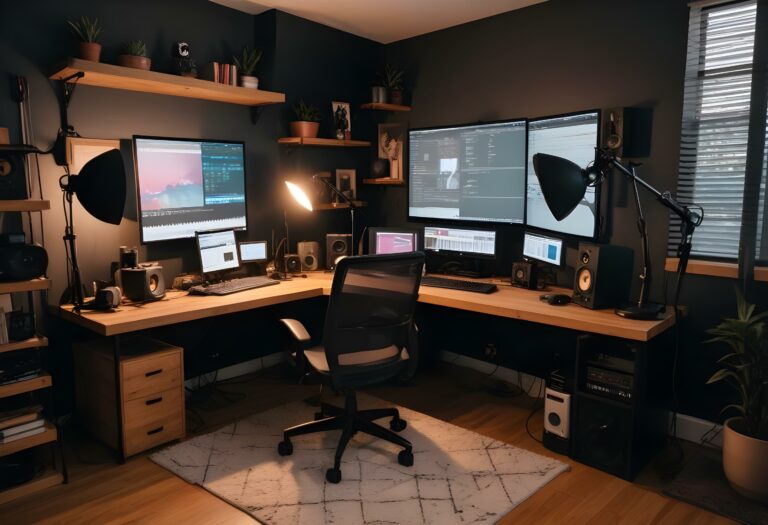
My wife and I recently uprooted our lives and relocated to a bustling neighborhood in Malaysia. Our new home, a cozy three-bedroom apartment, quickly became the headquarters for our podcasting agency. But as a podcast producer and sound engineer, I faced a challenge: transforming one of those small bedrooms into a functional home studio where I could write, edit, mix, master, and record professional-quality audio.
Over the past four months, I’ve embarked on a DIY journey to create that studio space. I’m excited to share the lessons I’ve learned and the solutions I’ve found, in the hopes of inspiring fellow podcasters who might be considering a similar endeavor.

Step One: Know Your Environment
The first step was understanding my space. I created a detailed floor plan, sketching out where I envisioned my equipment and furniture. This visualization process helped me optimize the layout for both functionality and sound quality.
Step Two: Acquire Your Arsenal of Sound Gear
With a clear picture of my studio’s design, I began researching audio equipment available locally. I set a budget and focused on versatile, mid-range options that could be upgraded later. My essential purchases included:
On the software side, my background in audio engineering led me to Pro Tools, but I encourage you to explore different Digital Audio Workstations (DAWs) and find one that suits your workflow. Investing time in mastering your chosen software, along with essential plugins like iZotope RX and Ozone, will significantly elevate your audio quality.

Step Three: Tackling the Acoustics Challenge
Equipping the studio was the easy part. Creating an optimal acoustic environment proved to be a more formidable task. I experimented with various soundproofing techniques, from DIY sound panels (which I ultimately scrapped due to time and budget constraints) to hanging rugs on the walls.

The biggest challenge? Our apartment’s lightweight door, which allowed sound to easily pass through. While rubber weatherstripping offered a partial solution, managing noise levels in our building became crucial. I learned to schedule recordings during quieter times of the day and take measures like closing curtains and doors, turning off fans, and communicating with neighbors to minimize disruptions.
The Home Studio Advantage
Despite the challenges, building a home studio has been incredibly rewarding. It offers unmatched flexibility, convenience, and creative control. You can design a space that reflects your personal style and brand, and you have the freedom to record whenever inspiration strikes.
Elevating Your Home Studio: Design Inspiration
A home studio is more than just a functional space; it’s an extension of your creative identity. Here are a few ideas to infuse your studio with personality and visual appeal:
By incorporating these design elements, you can create a visually engaging and immersive experience for both yourself and your audience. Your home studio becomes more than just a place to record; it becomes a reflection of your podcast’s unique personality and brand.
My no means is my home studio complete, its a work in progress. But Hey! Im enjoying the process. If you have any tips or constructive criticism, I’d love to hear it. Drop them in the comments sections below.
Launching a podcast can feel daunting, but it doesn’t have to be. Blue Vineyard Audio simplifies the process, guiding you every step of the way. From concept development to recording, editing, and distribution, we handle all the technical aspects so you can focus on your message. Let us take the stress out of podcasting.
Visit https://bluevineyard.com/audio/ and discover how we can help you bring your podcast vision to life.